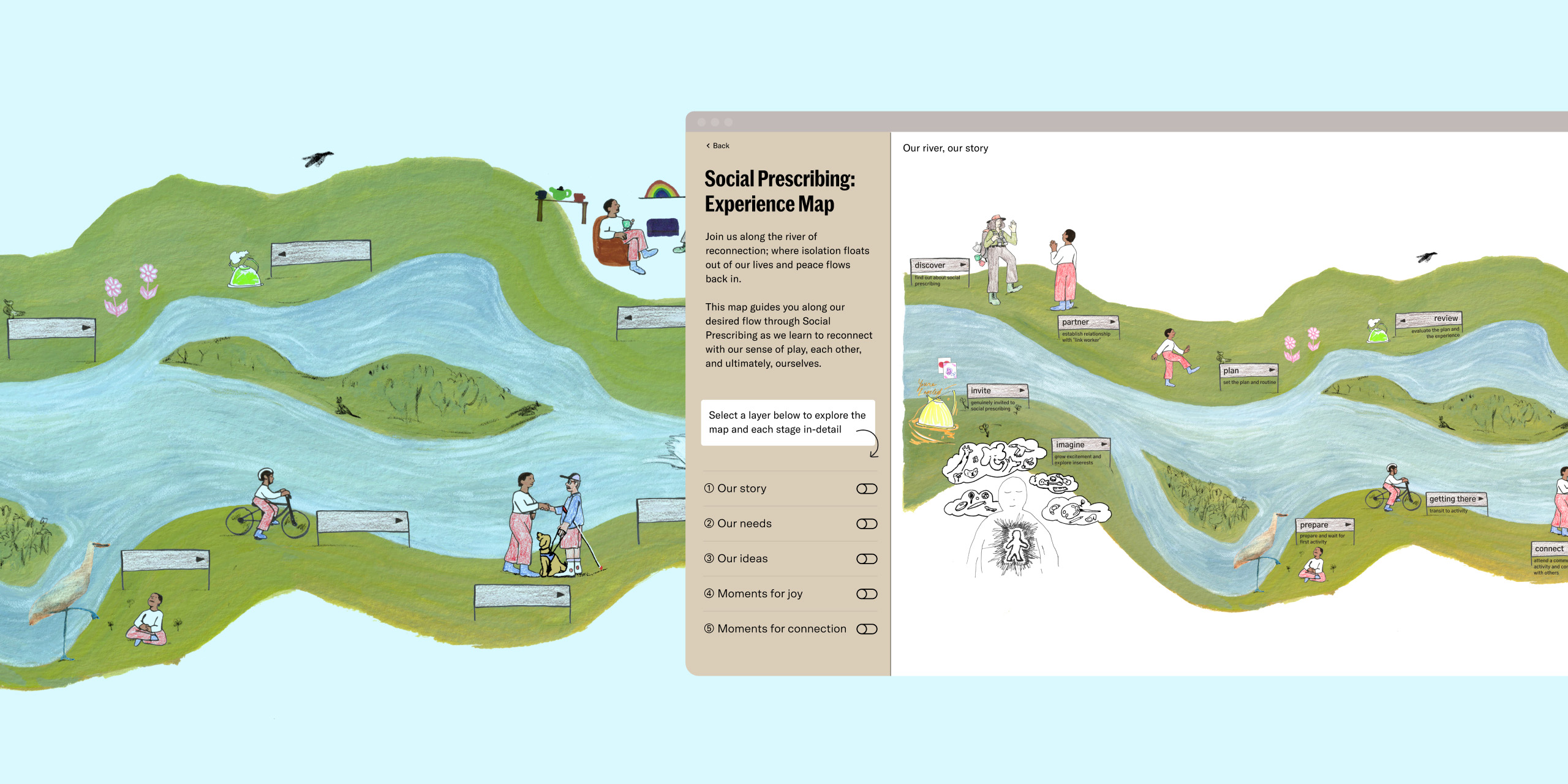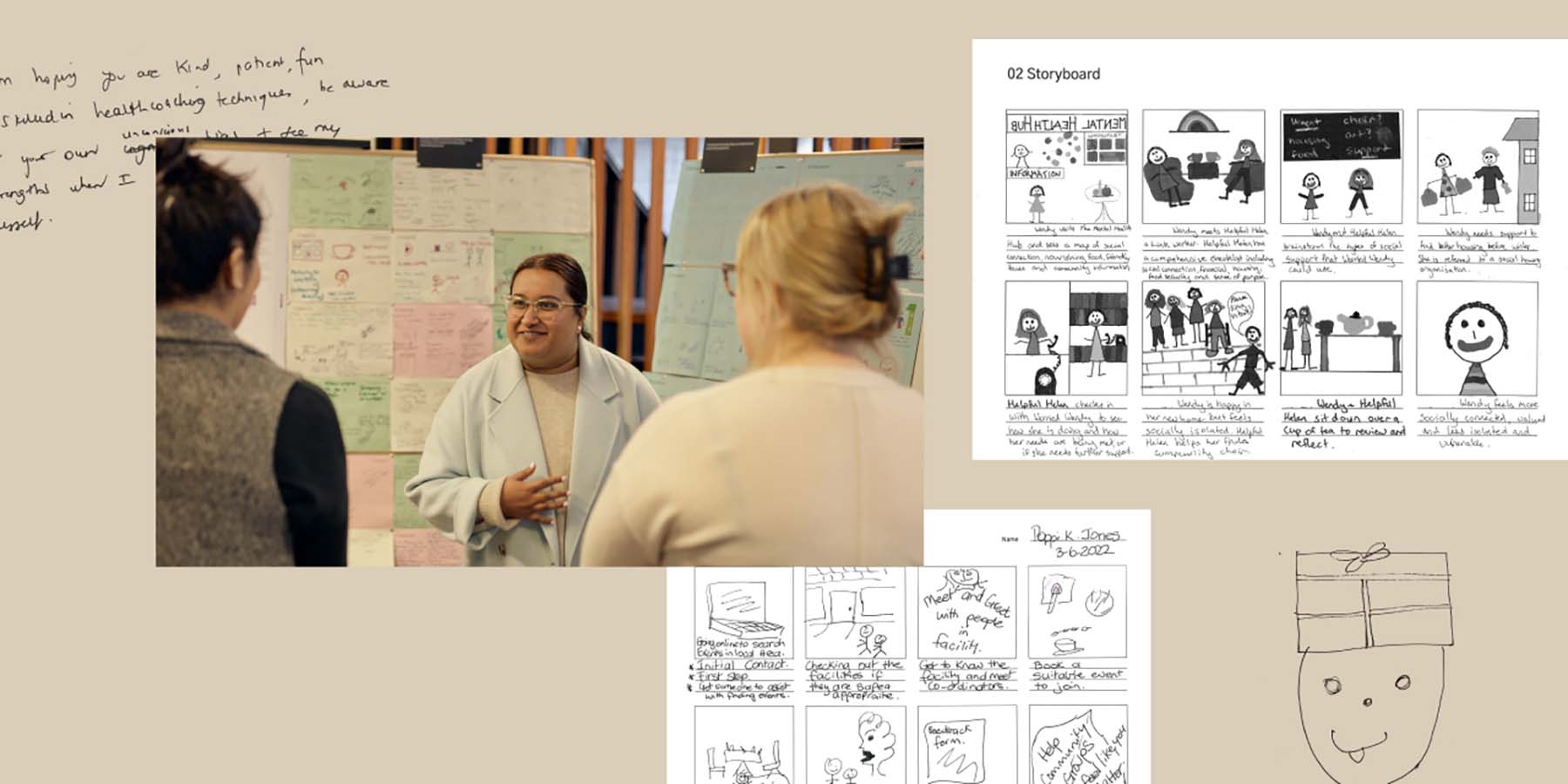32 consumers and carers came together to co-design a new service model for 'Social Prescribing’. Our solution is being trialed across six locations, supporting Victorians to be included in, and connected to, their communities. The solution is a new initiative embedded within the new Mental Health and Wellbeing Locals to connect people with community-based activities that best meet their interests and needs.
We arrived here after a generative design process to define the service journey and identify the roles, responsibilities, and qualities of the desired workforce. Our remit was across the experiential and operational aspects of the initiative.
The service design set out to deliver an in-person experience that doesn’t depend on technical literacy. This was to ensure a more inclusive experience for Victorians, to increase the level of comfort and confidence for service uptake for those with experiences of mental ill health and addiction, and create a curated experience for navigating community activities.
Throughout the service design, it was imperative the voice of our lived experience co-designers was at the forefront: to maintain integrity and amplify their stories, ideas, and aspirations. We brought together their words, drawings, and soundbites to inspire the new model of care and set a vision and guidelines to support local implementation, inspire ongoing local co-design, and embed the needs of lived experience.
Importantly, through this process, a majority of co-designers expressed increased confidence and connection with others. Co-design itself became a way to support the greater connection that we were striving for in designing ‘social prescribing’. Many co-designers have continued to extend and share their newfound design knowledge across other system reform projects, and taken on roles on regional bodies and steering committees. Others are in the process of applying for front-line roles in the Social Prescribing initiative itself.








